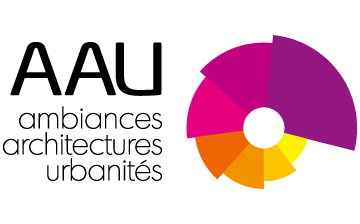DésiVille – outils d’aide à la Désimperméabilisation des sols artificialisés : développements méthodologiques pour l’évaluation du potentiel de désimperméabilisation et catalogue de solutions applicables en Ville
DésiVille – Support tools to the drainage of artificial grounds: methodological developments for the evaluation of drainage potential and catalogue of solutions applicable in the city
Financement : ADEME dans le cadre de l'appel à projets de recherche Modeval-Urba (Modélisation et évaluation au service des acteurs des territoires et des villes de demain), (36 mois)
Responsable(s) scientifique : Cécile Le Guern BRGM (coordinatrice)
Contrat de recherche terminé en septembre 2024
FR
- Partenaires : le CEREMA, pour le CRENAU Thomas Leduc et Myriam Servières, l’IFSTTAR, DIXIT, Nantes Métropole Aménagement.
L’artificialisation des sols urbains conjuguée au changement climatique confronte nos villes à divers phénomènes préjudiciables au confort, au bien-être et plus globalement à la santé des citadins (en termes d’ilots de chaleurs urbains (ICU), de risque inondation, de biodiversité comme de biogéochimie, etc.). Lorsque cette artificialisation s’accompagne d’une imperméabilisation de la surface, à la fragmentation écologique s’ajoutent l’accroissement de la stabilisation et du compactage du substrat, l’altération de l’albédo urbain, la perte de fertilité, de capacité de stockage et de régénération du sol… toutes nuisances susceptibles d’amplifier les phénomènes susmentionnés.
Cette imperméabilisation, qui est généralement induite par un changement d’usage des lieux, n’est cependant pas nécessairement irréversible. Il est légitime d’anticiper, par le biais d’une désimperméabilisation, de restaurer certains cycles naturels (eau – recharge de nappe, carbone, oxygène, etc.) et de favoriser la régulation naturelle de la température d’air ambiante notamment. Cette réversibilité ne doit toutefois pas faire l’impasse sur certains effets de bord liés notamment aux remontées de nappes phréatiques ou à la séquestration de polluants comme de carbone dans les sols et aux risques de résurgence ou propagation des polluants vers les eaux souterraines afférents.
DésiVille est un projet interdisciplinaire de 36 mois qui vise à apporter une réponse intégrée à la thématique de désimperméabilisation des sols urbains. Il convient en effet de prendre en considération dans cette dynamique l’ensemble des « composants » du système étudié et plus précisément : les usages et choix de réaménagement (enjeux sociaux, esthétiques et économiques notamment), l’atmosphère, les revêtements de surface, le sous-sol et les eaux souterraines, et de modéliser l’ensemble des flux (énergétiques, hydriques, polluants potentiel, etc.) qui le caractérisent avant / pendant / après désimperméabilisation. La proposition mobilise différentes modalités scientifiques. L’articulation sera assurée au moyen de géotraitements réalisés dans un SIG.
Pour traiter les transferts sur-sol/interface/sous-sol, mais aussi la complexité inhérente à la diversité des échelles et phénomènes en jeu (aléa climat local/phénomène d’ICU, aléa pollution des sols, aléa inondation par remontée de nappes, aléa vulnérabilité des eaux souterraines, aléa aménités d’espace, etc.), un consortium pluridisciplinaire a été réuni associant des chercheurs du BRGM, du CEREMA, du CNRS et de l’École Nationale Supérieure d’Architecture de Nantes, de l’IFSTTAR à des experts de l’urbanisme opérationnel (bureau d’étude, aménageur-NMA) en interaction avec la collectivité locale (Nantes Métropole). Il bénéficiera de l’expertise, des données et des résultats acquis dans le cadre des projets européens Urbinat et Nature4Cities, et du projet Muse cofinancé par l’ADEME.
EN
- Partners: CEREMA, for CRENAU Thomas Leduc and Myriam Servières, IFSTTAR, DIXIT, Nantes Métropole Aménagement.
- Project funded by ADEME as part of the Modeval-Urba (Modélisation et évaluation au service des acteurs des territoires et des villes de demain) call for research project.
The degradation of urban grounds, combined with climate change, confronts our cities to different phenomena detrimental to the comfort, well-being and more generally health of the citizens (in terms of urban heat islands (UHI), flood risk, biodiversity like biogeochemistry, etc.). When this degradation is accompanied by the drainage of the surface, the ecological fragmentation works with the increase of the subtract stabilisation and compressing, the alteration of the urban albedo, loss of fertility, of storage capacity and regeneration of grounds… every nuisance capable of amplifying the mentioned phenomena.
Waterproofing, usually induced by a change in the uses of the place, is not necessarily irreversible. It is legitimate to anticipate, with drainage, to restore certain natural cycles (water – groundwater recharge, carbon, oxygen, etc.) and to favour the natural regulation of ambient air temperatures. However, this reversibility cannot conceal certain side-effects, associated in particular with increasing water table levels or the sequestering of pollutants, such as carbon in the ground, and the risks of resurgence or propagation of pollutants towards the related underground water.
DésiVille is a 36-month interdisciplinary project that aims to bring an integrated response to the theme of drainage of urban grounds. The set of “components” of the studied system should be considered within this dynamic, in particular: the uses and choice of redevelopment (social, aesthetic and economic reasons especially), the atmosphere, surface coatings, underground and underground water. It should model the flows (energy, hydrous, potential pollutants, etc.) that characterise it before/during/after the drainage. The proposition mobilises different scientific modalities. The articulation will be guaranteed with geoprocessing carried out in a GIS.
To process the ground/interface/underground transfers, but also the inherent complexity to the diversity of scales and phenomena in play (local climate/UHI phenomenon hazard, ground pollution hazard, flood hazard through the rise of underwater levels, vulnerability of underground waters hazard, space amenities hazard), a pluridisciplinary consortium was created to reunite researchers from BRGM, CEREMA, CNRS, the Graduate School of Architecture of Nantes, IFSTTAR with experts in operational urban planning (consultancy offices, developer-NMA) in collaboration with the local authority (Nantes Métropole). This consortium will benefit from the expertise, data and results from the Urbinat and Nature4Cities European projects, as well as the Muse project, co-funded by ADEME.
